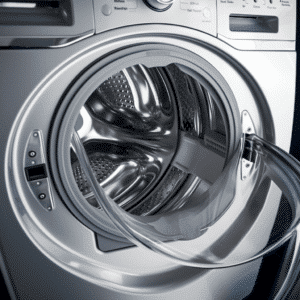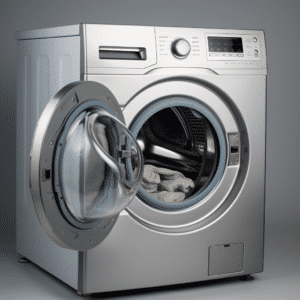Many people love having a washing machine in their homes. A few things can, however, go wrong with your washing machine, and when they do, you can find that it isn’t operating correctly or, worse yet, not operating at all.
This is a fairly typical Whirlpool washer machine issue. This article will offer a solution to lower your number of journeys to the repair shop.
Whirlpool Washer Locked and Won’t Turn On: Troubleshoot and Diagnosis

Things may get quite stressful when your washing machine breaks down. This is why you want an efficient solution to help your Whirlpool washing machine to operate correctly for as long as possible.
Do not attempt to force open the door of your locked Whirlpool washer. Find one of the causes below, then address it.
Control Lock is Active
Why is your Whirlpool washer locked? Control Lock is available on Whirlpool washers. Locking the start and cycle buttons prevents Whirlpool function changes.
Control Lock on the washer’s control panel is commonly mistakenly press. Control Lock disables washer operation and other buttons.
You may disable Whirlpool washer Lock Control in numerous ways. Your user manual will explain how to deactivate your product. After disabling Lock Control, your washer’s control panel won’t show LC or LoC.
Reset the Washer
Sadly, Whirlpool washers occasionally lock up.
If this happens to your washer, you must unplug it, wait 45 minutes, and then plug it back in.
This will reset the Whirlpool control panel and programming, letting the door lock reopen.
The Drum Still Contains Water
If the washer is locked, the drum has water. An empty front-loading washer requires a drain cycle. Clogged drains must be physically removed. Not to worry! A little hatch on the front of a front-loading washer allows access to the drain hose.
Pressure Switch Hose Blockage
The pressure switch keeps an eye on the water level in the washer drum and shuts off the motor if there is too much water usage.
If lint and residue damage this switch, the washer may not drain properly. Regular washer cleaning is essential, especially around the hose and important electrical components. Hoses that are damaged should be replaced immediately.
Unlock the Whirlpool Washer Manually
Use a flathead screwdriver to unlock your door. Look through the door to make sure the machine is not spinning.
Turn the latch clockwise until it stops if the screwdriver fits between the door and the washer. Unlocking your door lets you open it.
A Faulty Lid Switch
Your washer’s door not closing is typically caused by a faulty switch. Fortunately, you can do this repair yourself because most of these switches are easy to replace.
Below are the steps on how to repair a faulty lid switch:
- Unplug your washer.
- Find the lid; if you’re uncertain how to, go to your manual.Make sure it’s secure and aligned after finding it. If not, readjust it and test for resolution.
- If the washer switch is aligned, remove it to check for electricity.
- If a multimeter shows continuity, the switch is working.
- Next, put it back. If continuity fails, replace the switch. Make that the door lock works after replacement. If not, go to the next section.
Faulty Actuator Switch
The Whirlpool washer actuator motor is one of your appliance’s most vital parts. Your washing machine may experience various issues if the motors’ parts are damaged or worn out.
Your washer won’t be able to open or close its door, which is a safety, concern if the cables connecting to these essential components are loose or misaligned.
Turn on your washing machine and listen to a loud grinding noise from the actuator before using a multimeter to test for a defective washer actuator motor. If noise can be heard, the motor is damaged. You’ll have to get a new one. If there is no sound, unplug the device and look for the actuator motor (follow your manual).
Once you locate it, confirm that all cables are firmly connected. Next, check the motor’s continuity with a multimeter. If there is continuity, the motor is operating correctly, and you may move on to testing the drain pump for issues. You will need to replace the motor, though, if there is no continuity when you test it.
A Defective Drain Pump

There are a few potential reasons why the door of your Whirlpool washing machine won’t unlock. Your washer’s power supply might have unexpectedly failed, or your drain pump can be blocked or malfunctioning.
Even if you can hear the rest of the machine operating regularly, the door may lock and stay locked when any of these situations occur. Below is how to diagnose a Whirlpool washer pump. Before continuing, you should confirm that the washer’s electricity is still off. Next, locate your drain pump
Inspect the impellers of the drain pump to make sure they can spin freely (like a fan). If not, this is a strong indication that there is a problem with the motor. Utilize a multimeter to test the motor.
Test the Whirlpool washer’s drain pump motor. The pump motor is operating correctly if the circuit already has continuity, as determined by a multimeter. Replacement required unless otherwise noted. Check if the pump motor replacement fixed your problem.
Faulty Control Board
Your washer’s primary control board is most likely broken if you have difficulty unlocking the door. Depending on how old your washer is, this can be very expensive and might not be worth the repair.
